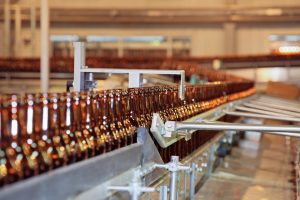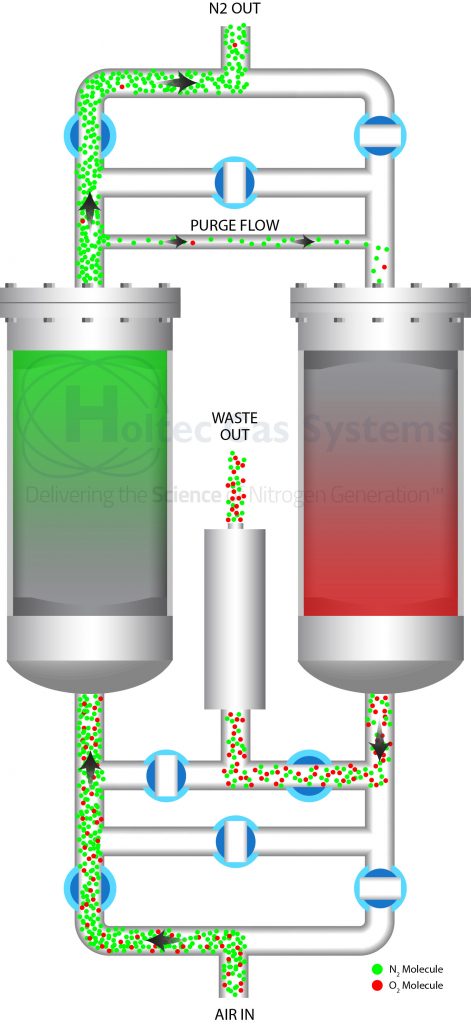Choose a different country or region to see the content specific to your location
Select Your Country/Region
Current Region:
 Global (EN)
Global (EN)
How can we help you?
The use of nitrogen in the brewing industry is increasing in popularity due to its inherent capability to preserve both raw materials and the final product, as well as enhance the quality of taste. By taking advantage of the physical properties of nitrogen, Master Brewers can drive important improvements affecting both the productivity of their operations as well as consumer reception of their product.

Nitrogen is used to eliminate oxygen, thereby minimizing flavor changing effects and waste that oxidation has on both raw materials and finished product. When storing full-leaf hops, a nitrogen atmosphere increases the shelf life of the hops by stabilizing the alpha acids critical to producing the desired final taste. Employing nitrogen at all phases of bottling to eliminate oxygen, including sparging and head space purging, preserves the taste quality and extends shelf life.
From a consumer perspective, the insolubility of nitrogen in water is an additional benefit brewers may take advantage of to produce beers with unique taste benefits. Low solubility and bubbles smaller than CO2 enable nitrogenated beers to have creamier, longer lasting heads with a smoother taste and texture.
With the expanding use of nitrogen, traditional sourcing via bulk supply delivery is often yielding to the more cost effective and operationally flexible solution provided by an on-site nitrogen generator. With a nitrogen generator, productivity improvements range from reduced supply costs to the operational benefits of flexibility in tailoring the nitrogen purity and consumption patterns to meet production needs.
Holtec is the leading manufacturer of high quality, high efficiency nitrogen generators for the beverage industry. With a commitment to research and development, our engineers have designed the most reliable and efficient nitrogen generators on the market. While maintaining a suite of standard products, Holtec’s unique strength is the ability to supply systems customized and sized for pilot plants, full bottling operations or warehousing implementations.
Pilot Plant Scalability – Designs optimized for small scale (20-50 barrels per day) enable brewers and operations managers to evaluate the use of nitrogen in a small scale environment prior to scaling up for brewery-wide operations.
Return on Investment vs. Bulk N2 – Rising global nitrogen usage has resulted in sharp price increases for bulk liquid nitrogen and compressed gas cylinders. Producing your own nitrogen is less costly; limited to consumed electricity and annual maintenance. ROI is typically less than one year not including the inherent benefits associated with shelf life improvements for both the raw materials (hops) and the finished bottled product. If your process does not produce enough CO2 to cover your bottling needs, using self-generated nitrogen will also reduce operating costs further.
Plant safety – Self-generated nitrogen is typically created and stored at about 100 psi (6.9 bar), whereas high pressure cylinders are typically filled to 2000 psi (138 bar) or more. Super-cooled liquid nitrogen allows for the storage of nearly 700 times more mass than in a similar volume of gas. Both of these situations represent a tremendous amount of stored energy which demands rigorous safety protocols. Conversely, self-generated nitrogen demands only the same safety procedures required for compressed air, which most plants are already using.
Warehousing – Storing hops in a nitrogen atmosphere can dramatically improve the shelf life of this high value raw material. With automatic alarms to indicate nitrogen purity, high-volume warehousing systems are constantly monitored to ensure that they are working to specification, improving customer reception of the final product and reducing waste.
Bottle Drying – Clean and dry nitrogen speeds bottle drying as compared to typical air sources.
Flexibility – Nitrogen generators free your facility from mandatory contract terms, including price increases, imposed by liquid nitrogen suppliers.
How Does a PSA Work? (see drawing to right)
A: See below and graphic at right for basic operation steps
Step 1: Pressurize adsorber “A” and then produce nitrogen until the separation media becomes saturated. During this time, adsorber “B” is depressurized and enriched oxygen gas is released to atmosphere as waste.
Step 2: Pressurize adsorber “B” and then produce nitrogen until separation media becomes saturated. During this time, adsorber “A” is depressurized and enriched oxygen gas is released to atmosphere as waste.
Step 3: The cycle repeats about every two minutes, beginning with Step 1, for as long as nitrogen demand continues, as determined by pressure transducer in nitrogen receiver.

What purity do I need?
A: Most companies choose a purity between 99%-99.9% for food and beverage applications. Holtec will be happy to help with the logistics of setting up your own evaluation.
How much nitrogen do I need?
A: To get a rough idea, it is possible to review bulk nitrogen purchase over a several month period. We are also happy to provide flow meters and engineering expertise in order to determine your instantaneous demand and evaluate usage patterns.
Can I keep liquid nitrogen as a backup?
A: Absolutely! However, you can send back your large rented liquid storage tank and purchase a much smaller storage tank which will drastically reduce the amount of liquid nitrogen lost to evaporation.
Is ambient air temperature important?
A: Yes. Temperature affects capacity and air consumption and nitrogen generator manufacturers typically will quote performance only at 70 °F. Holtec will always ensure that your actual conditions are taken into consideration.